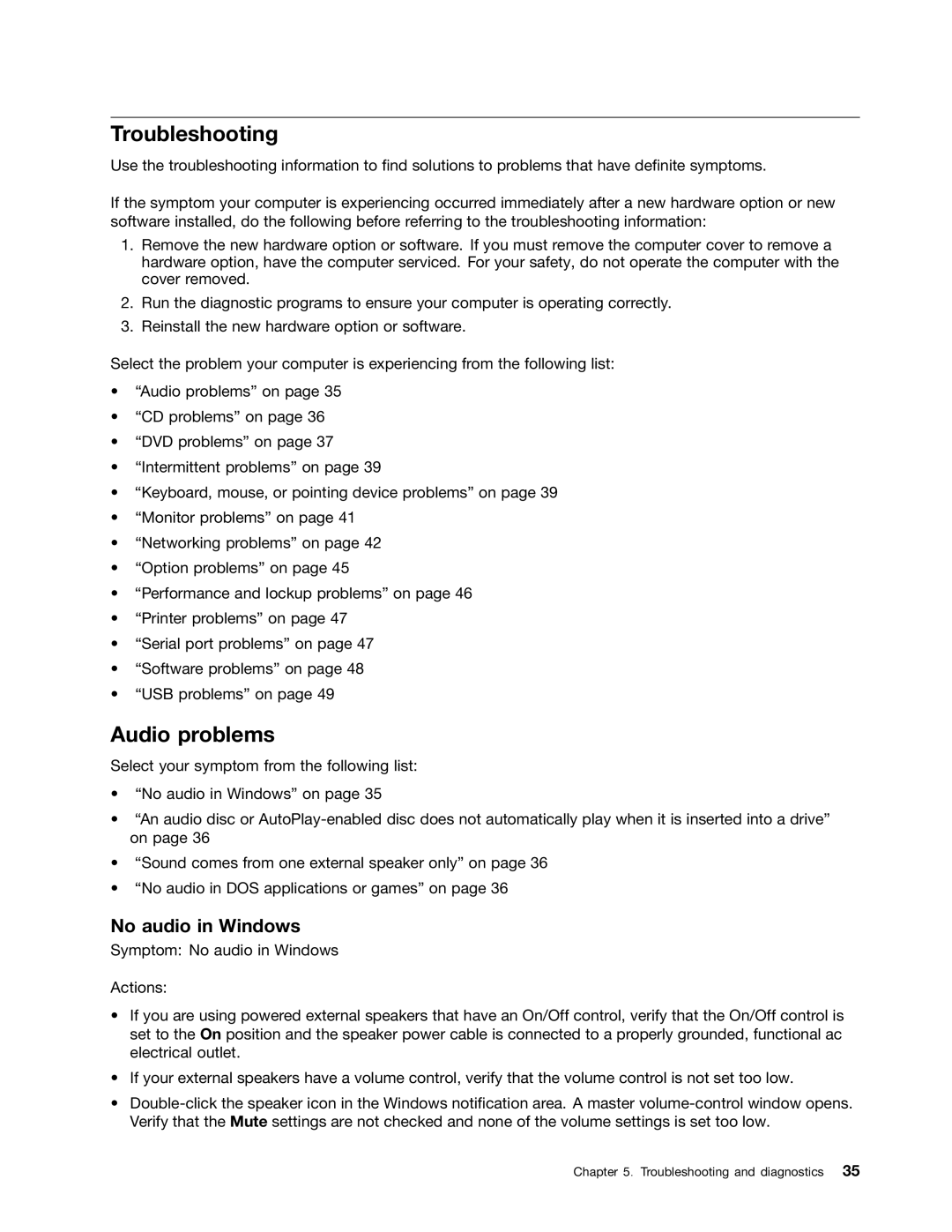Troubleshooting
Use the troubleshooting information to find solutions to problems that have definite symptoms.
If the symptom your computer is experiencing occurred immediately after a new hardware option or new software installed, do the following before referring to the troubleshooting information:
1.Remove the new hardware option or software. If you must remove the computer cover to remove a hardware option, have the computer serviced. For your safety, do not operate the computer with the cover removed.
2.Run the diagnostic programs to ensure your computer is operating correctly.
3.Reinstall the new hardware option or software.
Select the problem your computer is experiencing from the following list:
•“Audio problems” on page 35
•“CD problems” on page 36
•“DVD problems” on page 37
•“Intermittent problems” on page 39
•“Keyboard, mouse, or pointing device problems” on page 39
•“Monitor problems” on page 41
•“Networking problems” on page 42
•“Option problems” on page 45
•“Performance and lockup problems” on page 46
•“Printer problems” on page 47
•“Serial port problems” on page 47
•“Software problems” on page 48
•“USB problems” on page 49
Audio problems
Select your symptom from the following list:
•“No audio in Windows” on page 35
•“An audio disc or
•“Sound comes from one external speaker only” on page 36
•“No audio in DOS applications or games” on page 36
No audio in Windows
Symptom: No audio in Windows
Actions:
•If you are using powered external speakers that have an On/Off control, verify that the On/Off control is set to the On position and the speaker power cable is connected to a properly grounded, functional ac electrical outlet.
•If your external speakers have a volume control, verify that the volume control is not set too low.
•
Chapter 5. Troubleshooting and diagnostics 35
